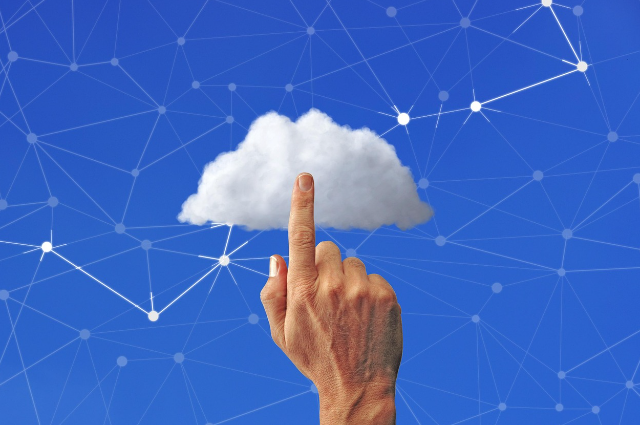
In the world of Technology, the Government uses Techno-politics to deploy big data to address essential hurdles and challenges like monsoon disaster prediction. Techno-politics is derived from the intersection of “Technology”, “Politics”, and “Society”. India, being an agricultural land, farming is one of the most essential sectors, which creates an impact on the economy as well as the people of the country. In a country like India, around 70 percent of the rural sector depends on agriculture directly or indirectly, which makes it essential to focus on monsoon, as the agricultural sector is entirely dependent on monsoon. This will not only affect the GDP, but also the lives of the people. All the credits go to our scientists, engineers, and all the people involved in making the new technology and data from satellites and sensors.
Due to the innovation in the field of technology, now the meteorological department can make efficient and effective decisions with respect to weather forecast. Artificial intelligence is a game changer which helps to analyse a large amount of climate data and predict monsoon rains with comparatively higher accuracy than past. Artificial intelligence is said to be a mastermind as it helps everyone to prepare better for the risks ahead. It helps farmers to plan their crops, water, fertilizers, and essentials better, insurance companies with the assessed risks, agricultural loan providers, and the emergency team to prepare well for disasters. This not only helps them with the preparation, but also helps them with better planning for better results. Big data not only helps to predict storms, but also manages disasters. It takes place by the combination of essential information like Satellites, Global Positioning System (GPS), social media, and sensors on the ground. When technology merges with people sharing real-time data, it makes rescue work smoother, faster, easier, and smarter. After the occurrence of a disaster, satellite images play a vital role in estimating the data as well as guiding to rebuild rebuilding efforts.
But every coin has two sides - both negative as well as positive. In the same manner, even tech advances have a downside. The Government has increased surveillance to gather data and use so much data. As we know, in India, big projects like Aadhar card and digital health records collect personal information of the individuals, whereas the new laws provide the government with broad powers to access the data of an individual with little oversight, as we live in a technological era. This can eradicate end-to-end encryption, thereby threatening people's privacy and widening the Government's control over an individual's private documents. These things can make the line blurry and light between protecting an individual's data as well as their rights. Not every time the data is used for safety, but sometimes to monitor someone's documents or misuse it, or suppress critics. Other countries like South Korea and the United States of America also use big data for disaster management, backing it by combining it with strong rules and regulations that protect the data as well as the trust of an individual.
Imagine technology as a powerful superhero—big data and AI—ready to save lives by predicting storms before they hit and helping governments respond quickly when disaster strikes. But like every superhero, it needs rules and a team to make sure it does good without stepping on anyone’s freedoms. For technology to truly help us without hurting our privacy or rights, governments must be transparent. That means openly sharing how they collect and use data, so everyone knows what’s happening and there are no secrets.
Clear laws are super important, too. These laws should set strict limits on how much personal information can be collected or gathered. Without these guardrails, surveillance can get out of hand, turning a helpful tool into a way to invade people’s lives. It’s like a balance scale: on one side, we want safety and smart disaster help, and on the other, we want our privacy and freedom to stay intact. Keeping this balance healthy makes sure we don’t trade one for the other.
But it’s not just about governments and laws. People—the citizens—need to have a voice too! After all, it’s our data and our lives at stake. When communities participate in decisions about technology and data use, it builds trust and makes those systems better and fairer. If people feel included and heard, they’re more likely to support and cooperate with disaster plans, making the technology even more effective.
And there’s another wrinkle: disasters don’t care about borders. A storm in India can affect neighbours nearby, and rising sea levels are a shared global challenge. That’s why international cooperation is key. Countries working together to share data, technology, and ideas can tackle disasters more efficiently and fairly. It also means everyone can learn from each other’s experiences and avoid mistakes.
At the end of the day, big data and AI are incredible tools with the potential to transform disaster management. They can warn farmers about droughts, help cities prepare for floods, and save thousands of lives. But this power comes with responsibility. If used carelessly, these tools could lead to too much surveillance and erode the freedoms that make democratic societies strong.
So, as technology helps us in facing nature’s toughest challenges, we must ensure it does so with respect for privacy, openness, and citizen rights. When governments stay honest about data use, create clear limits, and invite people into the conversation, we build a future where technology is our ally, not a threat. In this way, our societies remain fair, trusting, and open, even in the digital age.
